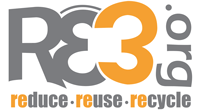 Guest Blogger - By Adrienne Outcalt, RePaper
Guest Blogger - By Adrienne Outcalt, RePaperLet’s talk paper for a moment. That often-used, highly recyclable commodity is so much a part of our daily lives that we barely give it any thought at all. Of course it can be recycled, it always goes in the recycling bin at your office or in your curbside bin at home, doesn’t it? Indeed, the United States does a fair job with paper recycling, at an average of 58 percent of all paper recovered.
But let’s carry that conversation a little further, to paper grades and recycled content. Even with more than 30 years of recycled-paper market development, recycled content has only reached 6 percent of the overall fiber that goes into printing and writing papers. To top that off, only half of that is post-consumer (meaning from your recycling bin). Put another way, more than 90 percent of the printing and office paper available in North America still has no recycled content at all.
How can that be possible, you might ask, given the push toward paper purchasers specifying 100 percent recycled papers? While the U.S. paper industry reports that recycled content overall makes up about one-third of its fiber, much of this fiber is used in high-recycled content products, such as cereal boxes and commercial janitorial tissue products.
These are great recycled products, but they cannot substitute for the lack of recycled content in printing and writing papers, most of which are made by the most environmentally demanding papermaking processes. In addition, nearly half of paper from offices and commercial establishments is still uncollected – despite being the paper grade needed to make recycled printing and writing papers. The greatest environmental benefits – reducing climate change gases, conserving forests, reducing energy and water use, cutting pollution and solid waste – are delivered by converting more printing and writing papers to recycled content.

No comments:
Post a Comment